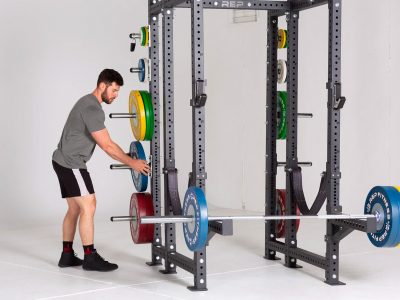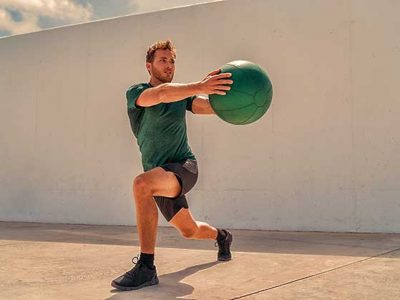Ever wondered how much that treadmill you’re considering for your home gym actually weighs?
This comprehensive guide will demystify any confusion about treadmill weights, diving into the details of different types and models.
Bạn đang xem: How Much Does A Treadmill Weigh Updated 07/2024
Curious yet? Read on to find out what gives treadmills their heft and how this impacts their use.
Types of Treadmills and their Weight Ranges
Budget Treadmills
Budget treadmills offer a more affordable entry point into the world of at-home fitness and can often be found in the weight range of 175 to 250 pounds.
The lighter weight makes these models easier to move and maneuver, ideal for smaller spaces or homes where portability is a key concern.
However, their relative lightness doesn’t necessarily mean they are lacking in features or durability.
On average, even budget-friendly treadmills come with a variety of workout programs, incline capabilities and have an impressive weight limit tolerating users from all walks of life.
Despite being on the lower end of the scale when it comes to treadmill weights, these machines still provide stability during workouts , just one reason why they’re such a popular choice among gym-goers looking to exercise at home without compromising quality for cost.
Curved Treadmills
Curved treadmills are gaining popularity in the fitness industry due to their unique design and benefits.
These treadmills do not use a traditional motorized belt but instead rely on body weight and momentum to power the machine.
As a result, they offer a more challenging and engaging workout experience. In terms of weight, curved treadmills tend to be some of the heaviest machines available, with weights ranging from 300 to 350 pounds or more.
This is mainly due to the additional mechanics and materials required for their design.
Despite their weight, curved treadmills provide exceptional stability and durability, making them suitable for high-intensity workouts in commercial gyms or home fitness spaces.
Commercial-Grade Treadmills
Commercial-grade treadmills are designed to withstand the demands of high-traffic gyms and fitness centers. These heavy-duty machines are built for durability and can handle rigorous daily use.
Typically, commercial-grade treadmills weigh between 300 and 500 pounds, making them some of the heaviest in the market.
The added weight is due to their sturdy construction, robust motors, and larger running surfaces.
With a higher weight capacity compared to home treadmills, commercial-grade models can accommodate heavier users without compromising performance or safety.
Xem thêm : Do Jump Ropes Make You Taller Updated 07/2024
If you’re looking to bring the gym experience into your own space, investing in a commercial-grade treadmill ensures reliability and longevity for all your intense workout sessions.
Under-desk Treadmills
Under-desk treadmills are a popular choice for those looking to incorporate exercise into their work routine. These compact and portable machines are designed to fit under your desk, allowing you to walk or jog while you continue working.
In terms of weight, under-desk treadmills typically fall in the lighter range, weighing around 60-100 pounds on average.
This makes them easy to move and store when not in use. Despite their smaller size, these treadmills still offer great benefits for cardiovascular health and can help increase calorie burn throughout the day without disrupting your workflow.
They are an excellent option for those who want to stay active during their sedentary desk jobs without sacrificing productivity or space.
Factors That Affect Treadmill Weight
Motor
The motor of a treadmill plays a crucial role in its weight.
Here are some important factors related to the motor that can affect the overall weight of a treadmill:
- Motor Size: The size of the motor can significantly impact the weight of the treadmill. High-end commercial-grade treadmills usually have larger and more powerful motors, which can make them heavier compared to budget or under-desk treadmills.
- Motor Type: Different types of motors are used in treadmills, such as AC motors and DC motors. AC motors are generally heavier than DC motors due to their construction and power output.
- Horsepower (HP): The horsepower rating of a treadmill’s motor affects its weight. Treadmills with higher horsepower ratings typically have larger and heavier motors to handle the increased power requirements.
- Incline Mechanism: Some treadmills offer incline capabilities, allowing users to simulate uphill running. Treadmills with incline mechanisms often have additional components such as lifters or hydraulic systems, which can add to their overall weight.
- Advanced Features: Treadmills with advanced features like touchscreen displays, built-in speakers, or interactive workout programs may require larger and more complex control systems, which can contribute to the overall weight of the machine.
Incline Capabilities
Treadmills with incline capabilities allow you to adjust the angle of the running surface, simulating uphill or downhill conditions.
This feature not only adds variety and challenge to your workouts but also helps target different muscle groups.
However, it’s important to note that treadmills with incline capabilities tend to be heavier compared to those without this feature.
The additional mechanical components required for adjusting the incline add weight to the overall machine.
So if you’re looking for a treadmill with incline capabilities, keep in mind that it may be slightly heavier than a standard treadmill.
Weight Limit
The weight limit of a treadmill is an important factor to consider when choosing the right machine for your gym. It refers to the maximum weight that the treadmill can safely support during use.
A higher weight limit ensures that individuals with varying body types and weights can comfortably use the treadmill without causing any damage or compromising its stability.
Treadmill weight limits can vary depending on the model and manufacturer, but it’s crucial to select one that suits the needs of your gym members.
Keep in mind that exceeding the weight limit could potentially lead to malfunctions, accidents, or even injury.
So make sure you choose a treadmill with a weight capacity that accommodates all users and promotes safe workouts for everyone in your gym facility.
Typical Weights of Popular Treadmill Brands
NordicTrack Treadmill Weight
Xem thêm : Gym Equipment Names Updated 07/2024
NordicTrack treadmills are popular among fitness enthusiasts for their high-quality construction and innovative features.
When it comes to the weight of NordicTrack treadmills, they typically fall within the average range.
On average, a NordicTrack treadmill weighs around 270 pounds. However, the actual weight can vary depending on the specific model and features.
It’s important to consider the weight of a treadmill when purchasing one for your home gym. The weight affects both stability and portability of the machine.
While lighter and lower-end treadmills usually weigh between 175 and 250 pounds, some larger models can weigh up to 450 pounds or more.
So be sure to account for this when planning where you want to place your NordicTrack treadmill in your home gym setup.
ProForm Treadmill Weight
ProForm treadmills are a popular choice for home gyms due to their quality and affordability. When it comes to their weight, ProForm treadmills typically fall within the average range of around 270 pounds.
However, specific models may vary in weight depending on their features and design.
It’s important to keep in mind that heavier ProForm treadmill models can weigh up to 450 pounds, while lighter options can be as light as 175 pounds.
So whether you’re looking for a sturdy and heavy-duty treadmill or a more portable and lightweight option, ProForm has various models to suit your needs.
Peloton Treadmill Weight
The Peloton treadmill is known for its sleek design and high-quality construction. When it comes to weight, the Peloton treadmill falls on the heavier side compared to other home treadmills.
With an average weight of around 325 pounds, this commercial-grade machine offers stability and durability during intense workouts.
The heavier weight ensures that the treadmill stays securely in place even when you’re running at top speeds or using incline settings.
So if you’re looking for a robust and reliable treadmill that can handle intense workouts, the Peloton treadmill’s weight makes it a great choice for your home gym setup.
Conclusion
In conclusion, the weight of a treadmill can vary significantly depending on factors such as brand, style, and features.
On average, treadmills weigh around 270 pounds, but they can range from as low as 50 pounds for manual treadmills to over 500 pounds for heavy-duty commercial-grade machines.
It’s important to consider the weight of a treadmill when purchasing one for your home gym, taking into account factors such as stability and portability.
Nguồn: https://usgyms.net
Danh mục: Gym Equipment










